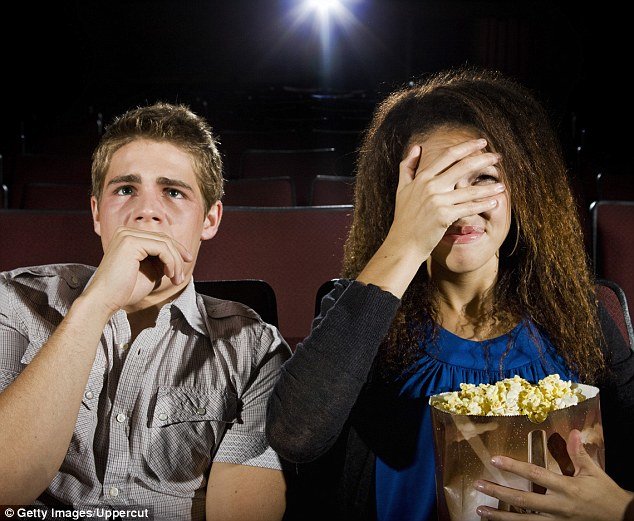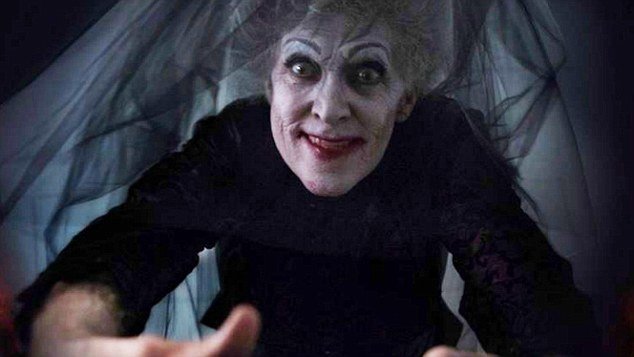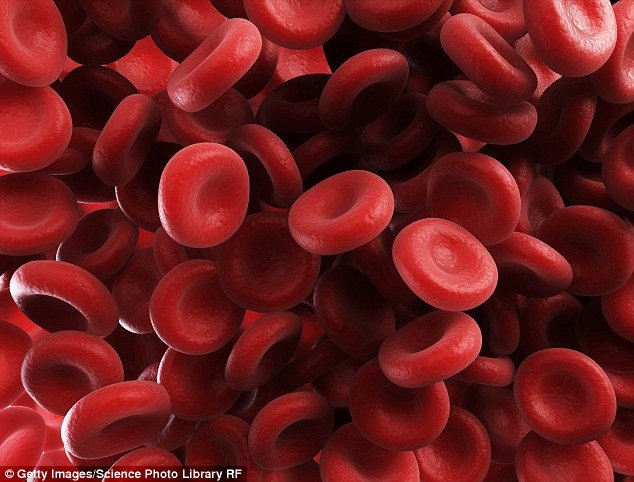
A new study found that when we feel scared, our blood does actually curdle.
Researchers discovered that the amount of a clotting protein, Factor VIII, increases in our blood when we become frightened.
The term dates back to medieval times and based on the concept that fear would 'run the blood cold' or 'curdle' blood, but no studies have been conducted to find the if this is true - until now.
Researchers from Leiden University Medical Center questioned whether acute fear can curdle blood, which they say poses an important evolutionary benefit, buy preparing the body for blood loss during life threatening situations.
The team observed 24 healthy participants from the age 30 years and younger.
Fourteen of them were told to watch a horror movie (Insidious) followed by an educational movie (a documentary about Champagne) and the rest were instructed to watch the same movies, just in reverse order.
The groups viewed the films about a week apart, during the same time of day and in a comfortable and relaxed environment.
Both sessions lasted for about 90 minutes, and blood samples were taken before and after each movie.
Participants also rated the fear they experienced, after watching each film, using a visual analogue fear scale ranging from 0 (no fear at all) to 10 (worst fear imaginable).
They also noted if they've seen the movie prior to the study and filled out a questionnaire about their lifestyle and favorite movie genre.
In the end, the horror movie was reported to be more frightening than the educational movies, with a 5.4 mean difference in fear rating scores.
There was also a visible differences in in the amount of clotting proteins after watching the movies.
Factor VIII levels went up in 57 percent of the participants while watching the scary movie and fell 86 percent when they watched the educational film.
WHAT IS FACTOR VIII?However, the researchers found no effect of either movie on levels of other clot-forming proteins, suggesting that although coagulation is triggered by acute fear, this does not lead to actual clot formation.
The F8 gene provides instructions for making a protein called coagulation factor VIII.
Coagulation factors are a group of related proteins that are essential for the formation of blood clots.
After an injury, clots protect the body by sealing off damaged blood vessels and preventing further blood loss.
Coagulation factor VIII is made chiefly by cells in the liver.
This protein circulates in the bloodstream in an inactive form, bound to another molecule called von Willebrand factor, until an injury that damages blood vessels occurs.
In response to injury, coagulation factor VIII is activated and separates from von Willebrand factor.
The active protein (sometimes written as coagulation factor VIIIa) interacts with another coagulation factor called factor IX.
This interaction sets off a chain of additional chemical reactions that form a blood clot.
They point out some study limitations, but conclude that, in young and healthy adults, 'watching bloodcurdling movies is associated with an increase in blood coagulant factor VIII without actual thrombin formation.'





Reader Comments
to our Newsletter